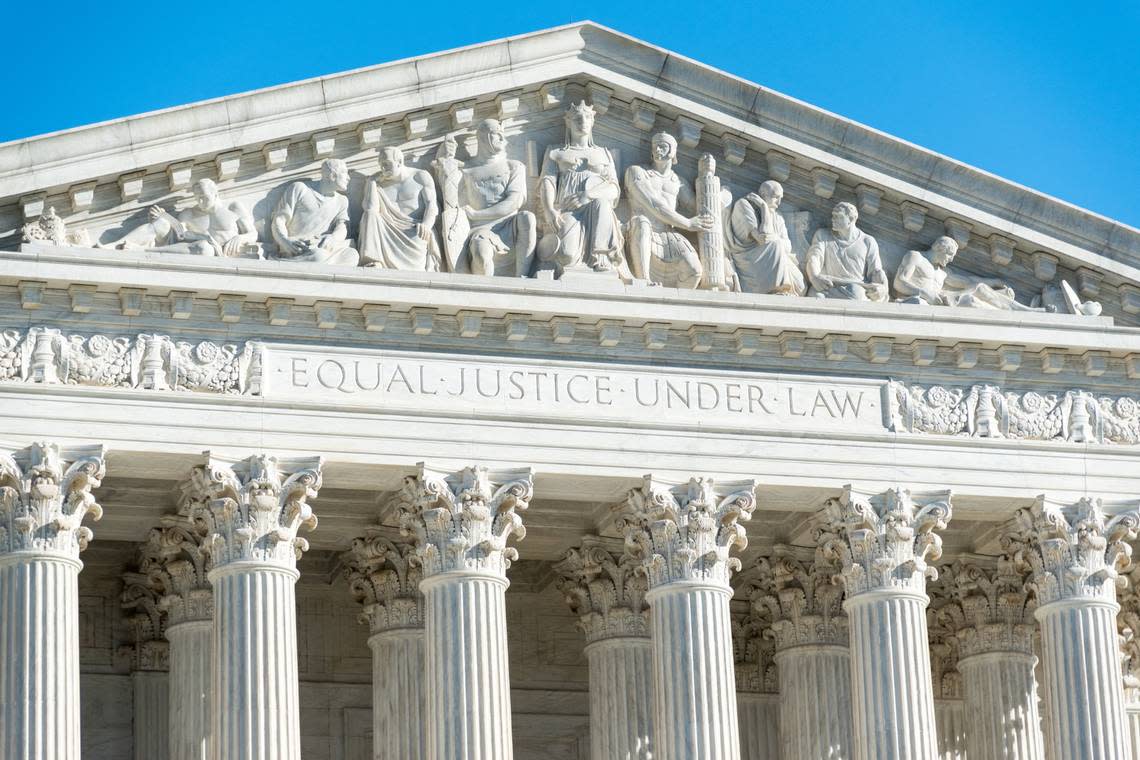Supreme Court says panel was wrong in ruling SC congressional map unconstitutional

- Oops!Something went wrong.Please try again later.
- Oops!Something went wrong.Please try again later.
- Oops!Something went wrong.Please try again later.
In a 6-3 decision, the U.S. Supreme Court said a three-judge panel erred when ruling South Carolina’s -congressional map is unconstitutional.
The congressional map will be used in November’s election.
The South Carolina Conference of the NAACP said the map unlawfully diluted Black voting power in the state as Black voters were packed into the 6th Congressional District, a majority-minority district represented by U.S. Rep. Jim Clyburn, D-Santee.
But in the majority opinion, Justice Samuel Alito wrote race and politics must be disentangled to prove the Legislature was motivated by race, and the trial judges must presume lawmakers acted in good faith.
“The three-judge District Court paid only lip service to these propositions,” Justice Samuel Alito wrote in the majority opinion. “That misguided approach infected the District Court’s findings of fact, which were clearly erroneous under the appropriate legal standard. We therefore reverse the trial court in part and remand for further proceedings.”
Alito was joined by Chief Justice John Roberts and Justices Neil Gorsuch, Brett Kavanaugh and Amy Coney Barrett. Justice Clarence Thomas concurred with the opinion.
Justices Elena Kagan, Sonia Sotomayor and Ketanji Brown Jackson, the court’s three liberal justices, dissented in the opinion.
State lawmakers say they drew the map with political considerations in mind hoping to make the 1st Congressional District a more Republican-leaning one, rather than a toss up Lowcountry district, represented by U.S. Rep. Nancy Mace, R-Isle of Palms.
Because race and political party preference are so intertwined in South Carolina, it is difficult to draw a map where partisan and racial demographics aren’t closely aligned, Alito said during October’s hearing.
A district in South Carolina that leans Democratic will have a high Black voting age population.
The Supreme Court has ruled it is OK to draw a map using partisan leanings, but it’s not OK to gerrymander a map on a racial basis.
During the October hearing, the conservative justices, who make up a majority of the court, seemed skeptical of the NAACP’s arguments. The justices said the NAACP had not provided an alternative map that could have been considered. Justices also pointed out the South Carolina congressional map did not have oddly shaped districts.
“If they are disregarding race entirely, and looking only at politics, where race and politics are so closely aligned, it isn’t surprising that when you want to get a district that has a certain Republican percentage, you’re going to get a district that has a steady (Black voting-age population),” Alito said during the October hearing.
This article will be updated.

